Aperture to end Development; and Arrival of PhotoMatte, Image Exporting Software - Bangkok Post, Life

AMITIAE - Wednesday 2 July 2014
|
Aperture to end Development; and Arrival of PhotoMatte, Image Exporting Software - Bangkok Post, Life |
 |
|
|
By Graham K. Rogers
A lot of users, however, had already migrated to Adobe Lightroom and this point alone may have suggested to Apple that Aperture was no longer needed. I disagree, of course, and expect to carry on using it for a while: at least until I can assess the new Photo application and see if Adobe will ease the migration to Lightroom for Aperture users. What is also essential for me is image synchronisation between my Macs and iOS devices. While there is a Lightroom app, it requires a subscription and does not work with iCloud.
The new application has some basic features that we already use on the iPhone - Crop, Filters, Adjust, Retouch, Red-eye - but these can be expanded into more specific controls that have easy-to-read displays as adjustments are made. There is speculation that the tools will make this new software a compromise between iPhoto and Aperture, but it seems rather diluted so far. It is also hoped that 3rd party developers may make some plugins available to expand functionality, as they do now with Aperture.
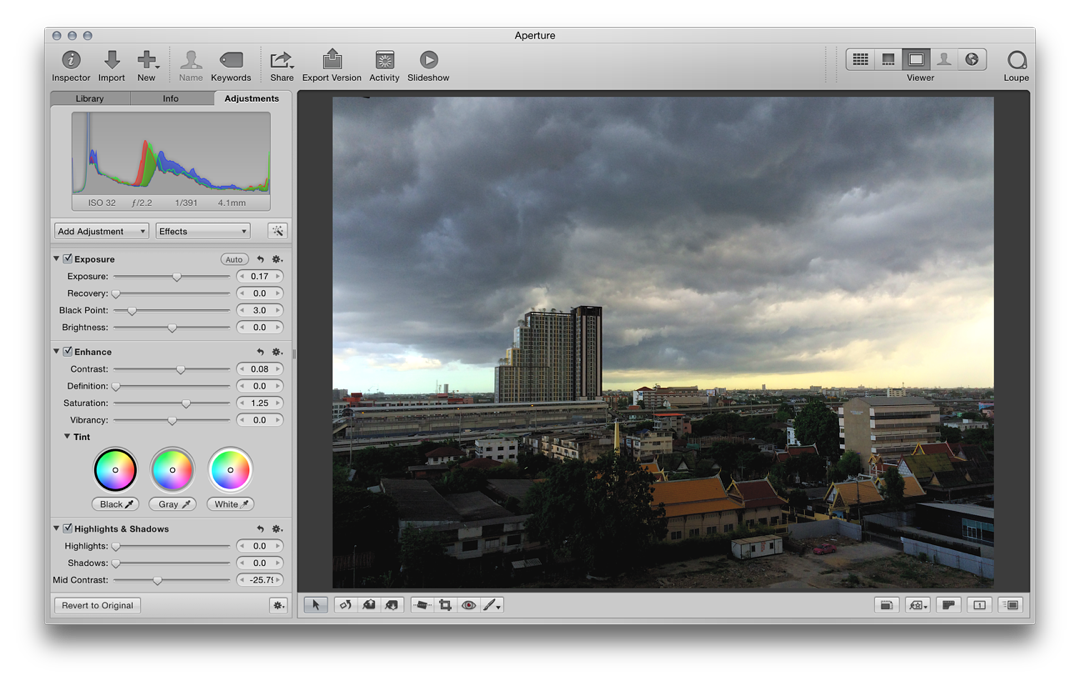
Editing in Aperture
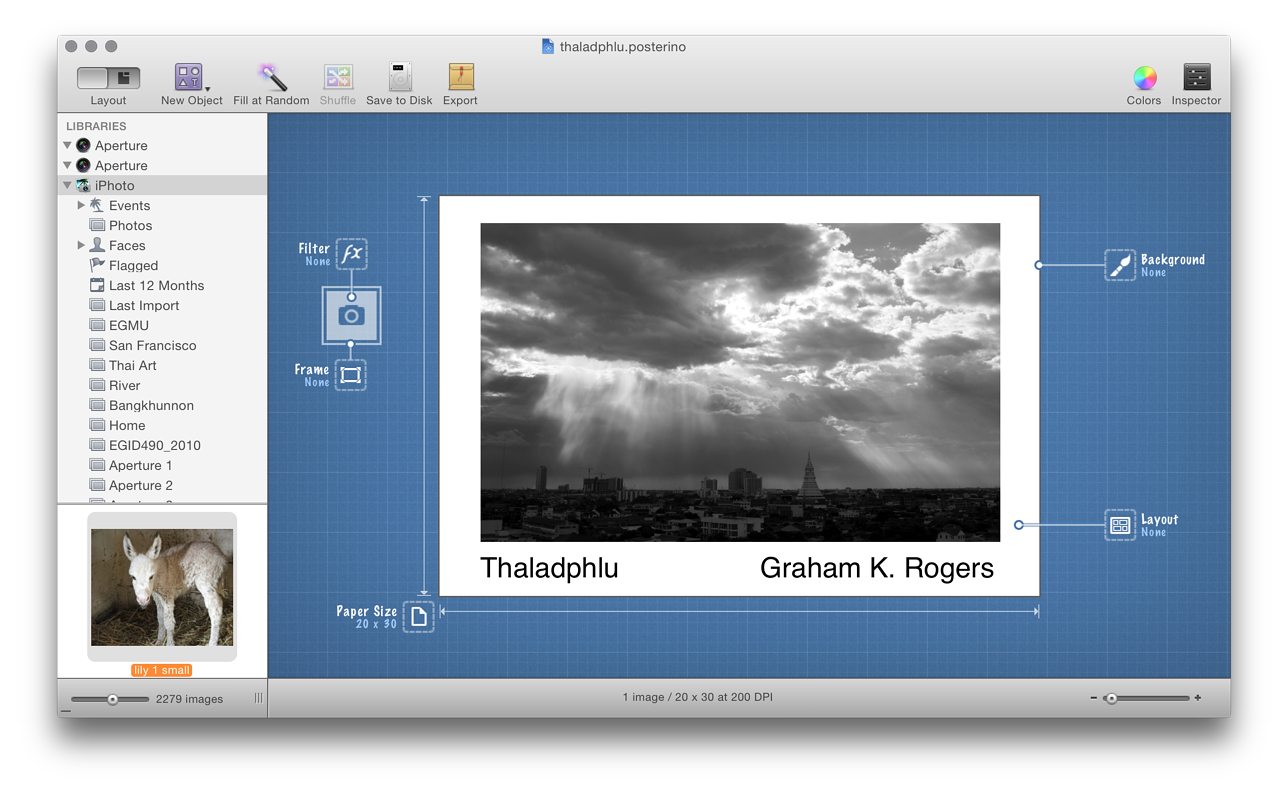
Layout in Posterino
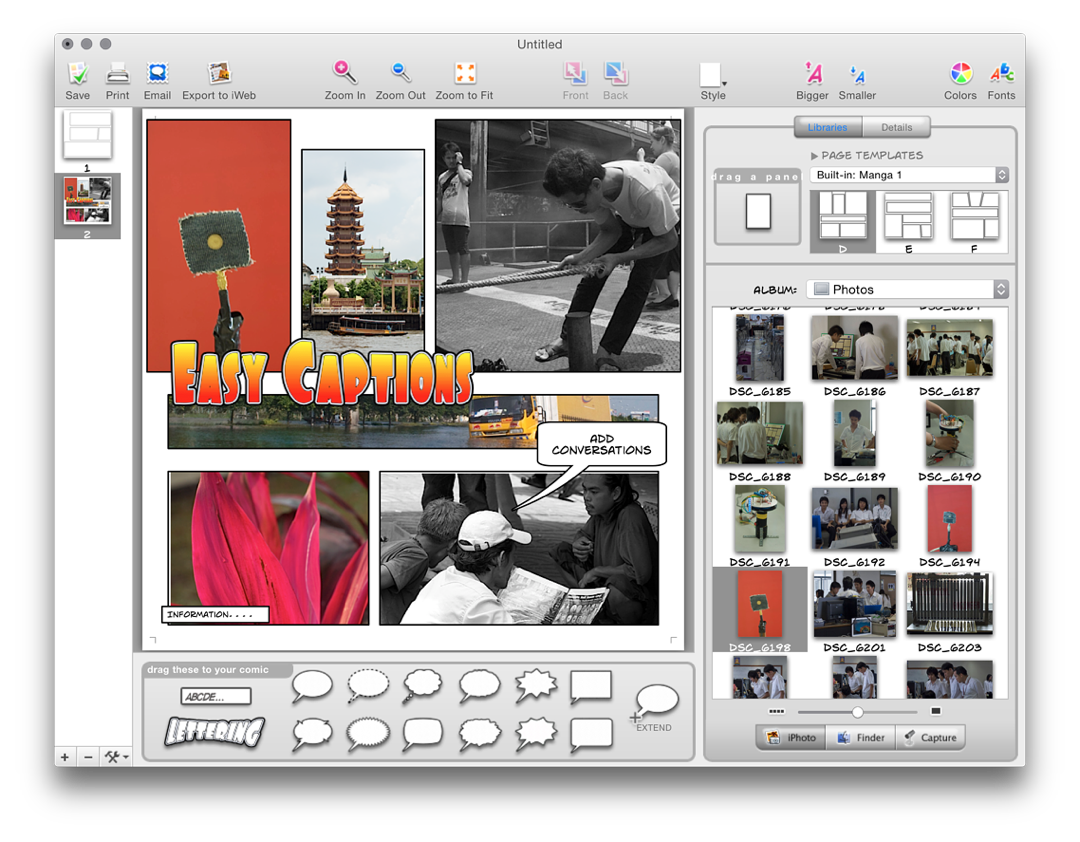
Comic Life
It is a hefty download of over 700 MB, mainly because of the video help files that show how best to create output with PhotoMatte. This is available when the application is first opened. Once the user has begun to use the application, it is a simple task to access all the information via the Help menu: an item in there opens the panel again.
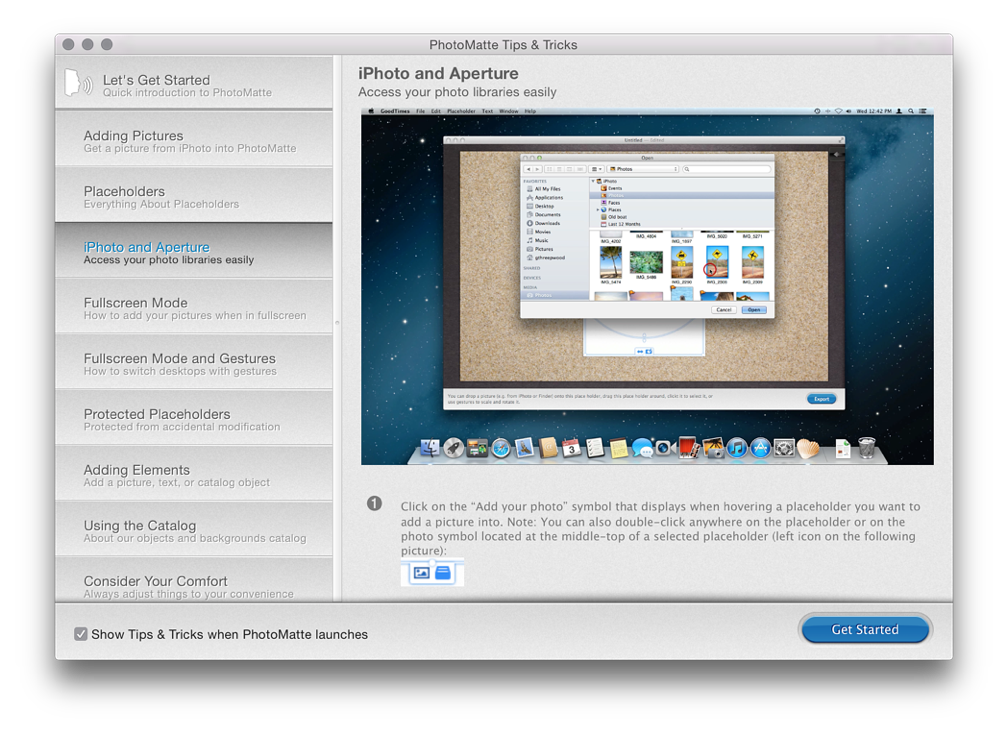
PhotoMatte Help Panel
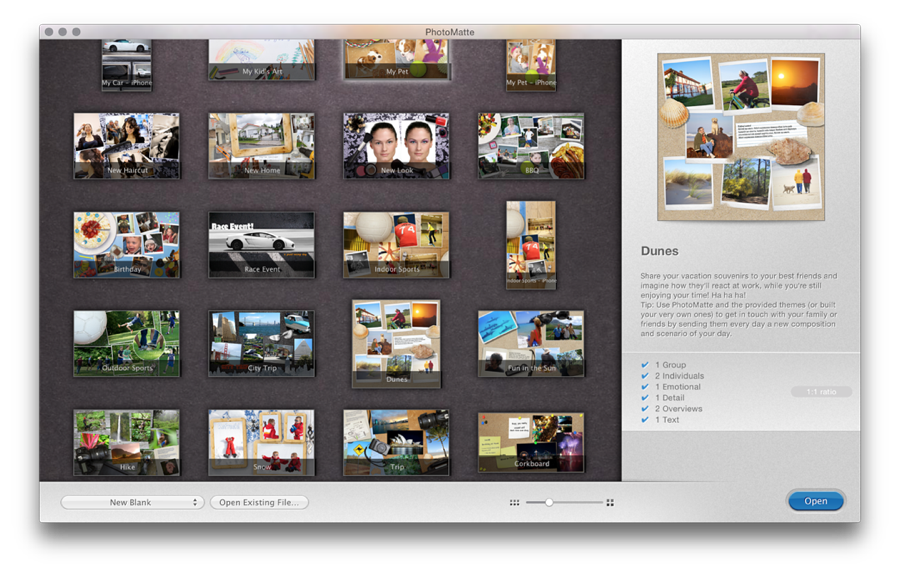
PhotoMatte Templates
Once an image is in the panel, it is easy to resize or reposition, as well as rotate, so that the user's preferred display style is possible. Once I had selected a suitable template, I dragged in some images and assembled these into a montage for a recent trip. It was easy to add more placeholders for images or text (or objects), so more could be added.
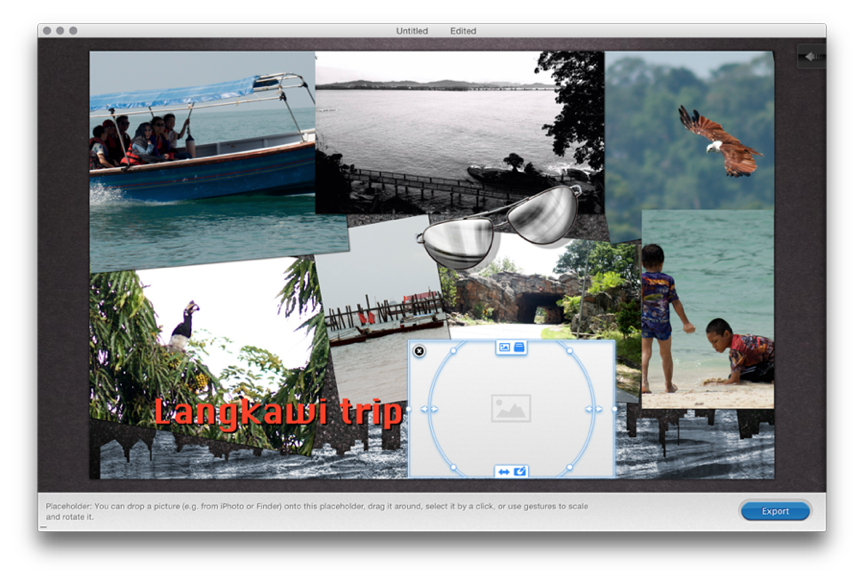
PhotoMatte - Quick Photo-Montage
When I exported a montage I was able to adjust the resolution and produced a 1.5 MB file in JPG format of 56 x 35 inches which may be rather large for some uses but an indication of potential.
Graham K. Rogers teaches at the Faculty of Engineering, Mahidol University in Thailand where he is also Assistant Dean. He wrote in the Bangkok Post, Database supplement on IT subjects. For the last seven years of Database he wrote a column on Apple and Macs. He is now continuing that in the Bangkok Post supplement, Life. |
|

For further information, e-mail to

|

|